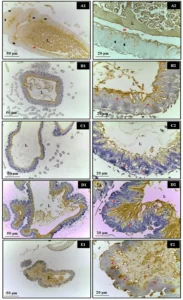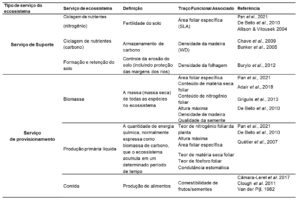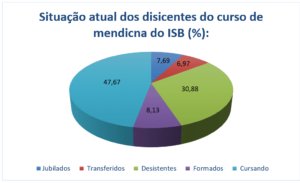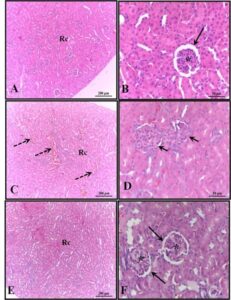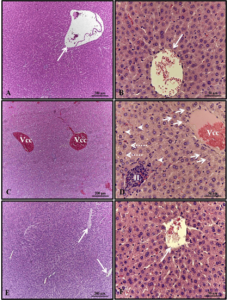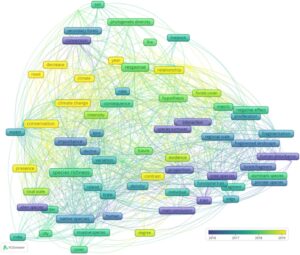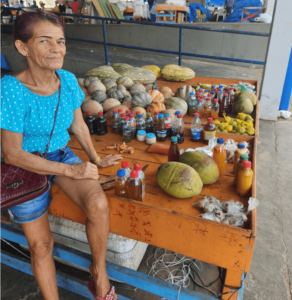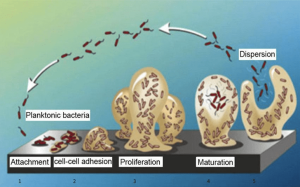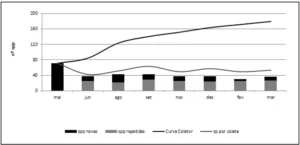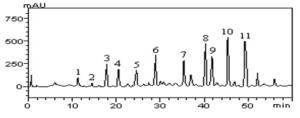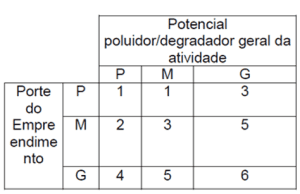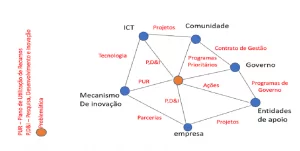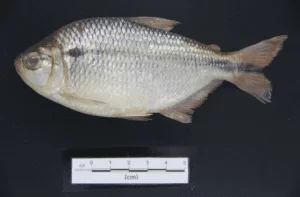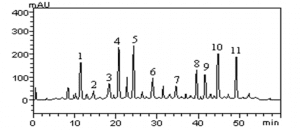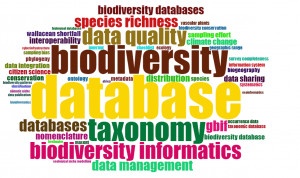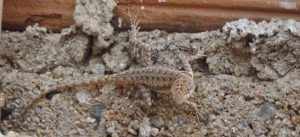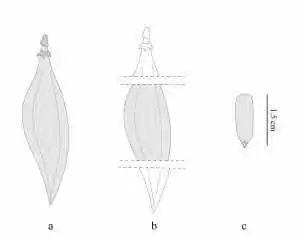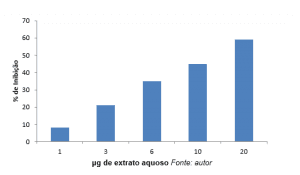BIBLIOMETRIC REVIEW
MALOSSO, Milena Gaion [1], ALVES, Wendrio Nunes [2], SOUZA, Giuliana Rosana da Silva [3]
MALOSSO, Milena Gaion. ALVES, Wendrio Nunes. SOUZA, Giuliana Rosana da Silva. Conservation Tree: A Game for Teaching Science, Botany, and Environmental Education. Revista Científica Multidisciplinar Núcleo do Conhecimento. Year: 08, Ed.: 10, Vol.: 02, pp. 54-75. October 2023. ISSN: 2448-0959, Access Link: https://www.nucleodoconhecimento.com.br/biology/conservation-tree, DOI: 10.32749/nucleodoconhecimento.com.br/biology/conservation-tree
ABSTRACT
In recent decades, the teaching of Biology and Natural Sciences has been primarily focused on preparing students for college entrance exams (Silva, 2019), reducing education to the memorization of concepts, rules, and processes and limiting nature to repetitive events (Costa; Mota; Brito, 2021). To fully comprehend scientific knowledge, it’s necessary to consider everything that surrounds the organisms discussed in these courses (Monerat & Rocha, 2018). Botany education was, for an extended period, disconnected from the natural environment (Pereira-Ribeiro et al., 2018). Publications in the field predominantly emphasized foreign flora and landscapes over domestic ones, leading to a decline in interest in botany (Mello, 1996) and, consequently, neglecting the native landscape as part of students’ daily life. Alternative teaching tools are crucial for understanding the subjects taught in the classroom and for retaining the terminology and concepts presented in theoretical classes across various disciplines (Perini & Rossini, 2018). The participation of students in group games aims to stimulate children and adolescents to develop logical reasoning and promote greater social integration among students (Paiva; Fonseca; Colares, 2022). In this context, this university extension project’s primary objective is to develop and test methodological strategies as alternative tools for teaching Natural Sciences, Botany, and Environmental Education. The foundation of these strategies is botanical educational games rooted in regional flora, which were tested in 6th-grade classrooms at the State School Maria Almeida do Nascimento in Coari/AM. The methodology includes meetings with student extensionists to outline evaluation measures, the application of games, and the dissemination of the results. These results have been made available as an alternative methodological tool for the school’s teachers. As a result, it was observed that the game effectively facilitated the introduction and consolidation of botanical content, particularly in plant morphophysiology and environmental conservation, among community learners, who are 6th-grade students for whom the game is intended.
Keywords: University extension project, Development of educational games, Teaching Natural Sciences, Botany, and Environmental Education.
1. INTRODUCTION
According to Article 207 of the Federal Constitution, universities must adhere to the principle of the inseparability of teaching, research, and extension (Brasil, 1998), making this tripod a guiding precept governing the operation of Brazilian universities and defining their role in society (Lottermann et al., 2019).
University extension is an academic activity that involves the transfer of knowledge, skills, and resources from the university to society at large, beyond the boundaries of the academic campus (Lamarca et al., 2018). The main goal of this activity is to promote interaction between the university and the community, contributing to social, cultural, economic, and scientific development (Malosso; Alves; Santos, 2023).
Extension activities can include service projects such as consulting, healthcare services, legal guidance, training courses, workshops, cultural events, social responsibility initiatives, and other forms of community engagement (UFAM/PROEXTI, 2016).
According to Cruz et al. (2011), extension is a way to put into practice the knowledge produced at the university for the benefit of society, promoting inclusion, development, and knowledge dissemination.
With this latter goal in mind, we carried out this extension project. The general objective of this extension project was to stimulate the understanding and retention of natural science, botany, and environmental education content, particularly related to the conservation and use of genetic resources and plant morphophysiology through playful activities. The specific objectives were to develop an educational game to facilitate the retention of topics in Natural Sciences, Botany, and Environmental Education; encourage students to reconnect with natural vegetation; research and discuss methodological strategies for creating games; integrate the Institute of Health and Biotechnology of Coari with the Coari community; and encourage undergraduate students to develop methodological strategies and alternative tools for use in the classroom, aiming to facilitate learning and reinforce it for 6th-grade students at the State School Maria Almeida do Nascimento, located in the municipality of Coari, Amazonas. Environmental education, including botany, is one of the transversal themes of the National Common Curriculum Base (BNCC).
2. METHODOLOGY
This extension project consisted of seven distinct stages.
In the first stage, the student extensionists prepared the Informed Consent Form and Image Release Authorization (Annex 1) below, following the guidelines established by the Research Ethics Committee of the Federal University of Amazonas (CEP/UFAM). They submitted the form to the parents, requesting their signature to authorize the participation of their minor child in this educational activity, as well as the use of the child’s image.
Annex 1: Informed Consent Form and Image Release Authorization:
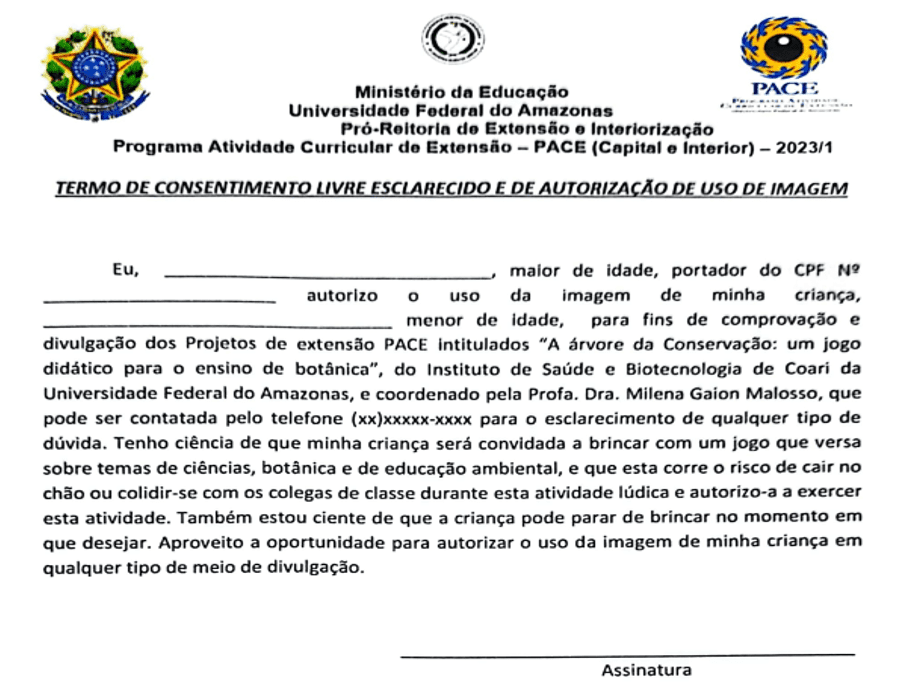
On the previously scheduled day, the student extensionists collected the properly filled and signed consent and image use authorization forms from the school’s administration.
In the second stage, meetings were held with the student extensionists to inform them about the content of this extension action and to let them know that they should develop an educational game that would teach the contents of natural sciences, botany, and education in a playful manner to the 6th-grade students of Elementary School, as directed by the National Curriculum Guidelines (DNCC).
The student extensionists were instructed to conduct bibliographic research on the subjects of Natural Sciences, Botany, and Environmental Education in the “Science” books for the 6th grade of Elementary School, as recommended by the Ministry of Education, and they chose to work with the contents of the Natural Sciences book by Leite and Canto (2018), which was used at Maria Almeida do Nascimento State School. In this stage, the student extensionists read the entire book, aiming to connect the topics of botany and environmental education with the other topics of the book, such as zoology and ecology, among others. After reading, they drafted the questions used in the game and then created the PowerPoint slides, which were used as the game, as demonstrated by Schettino and Mendes (2021).
According to Ribeiro and Amorim (2022), the use of educational games aids in cognitive learning and the retention of theoretical content, which is why they are recommended as a teaching tool for elementary school students.
In the following meeting, the student extensionists proposed the game “The Tree of Conservation” as an alternative strategic tool for teaching these contents.
The subjects of natural sciences, botany, and environmental education were addressed in the form of questions, which covered the constituent parts of plants and their functions, photosynthesis, plant classification, the importance of plants for living beings, the use of plants by industries, food chains and webs, causes of environmental impacts and how to reduce or prevent them, the importance of environmental conservation, and the awareness that humans are part of the environment and by destroying it, they destroy themselves.
The questions were presented on slides, as seen in Figure 1:
Figure 1: A. Game opening slide; B. Presentation of one of the game questions
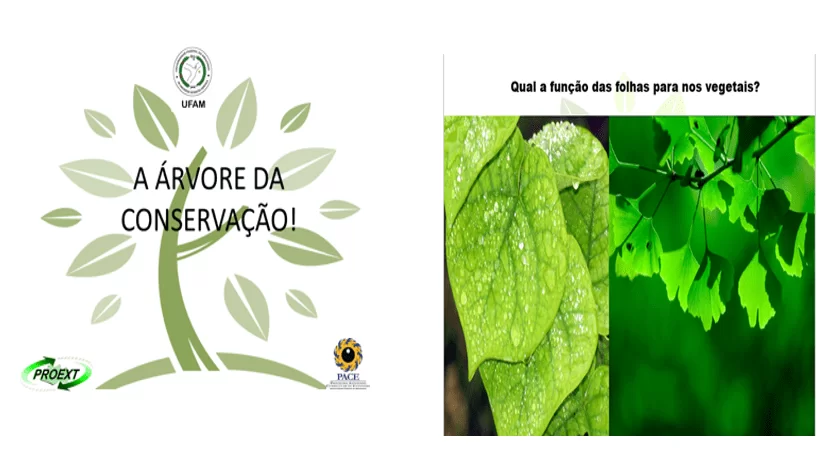
In the third stage of this extension action, a thorough analysis of the contents included in the game was conducted by the coordinators of this activity.
During these meetings, the game was also set up, consisting of a styrofoam tree painted with gouache that was attached to the chalkboard with masking tape and divided in half by an imaginary line. On each side of this line, 25 leaves made of green EVA with black marker-drawn veins were pinned with thumbtacks. A small bell was used, placed on a chair near the chalkboard, as well as a laptop connected to a data projector that displayed questions about various botanical topics on the board. The elementary school community students were separated into two rows, standing just in front of the chair with the bell, as shown in Figure 2.
Figure 2: Arrangement of teaching materials and elementary school community students in the classroom:
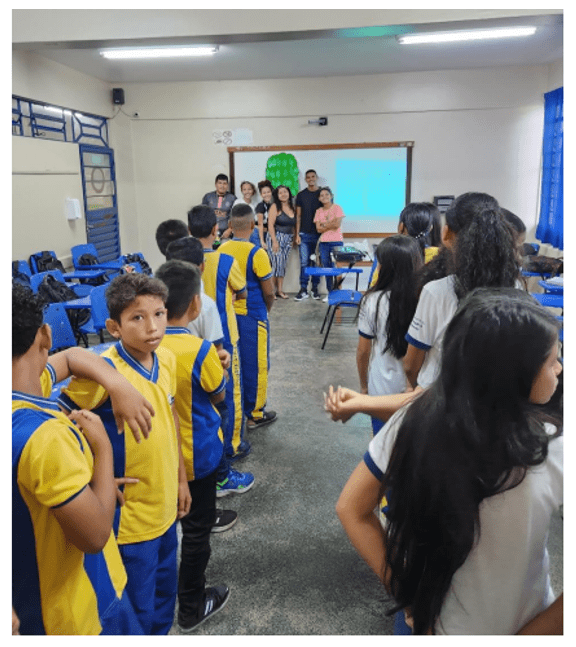
In this stage, the game’s operation and rules were also determined.
First, it is essential to note that each side of the imaginary line belonged to one of the two teams of community students divided into two lines.
The game worked as follows: an academic extensionist projected a question on the board, counted to 3, and said, “go.” Then, the community students who were in the first position of the line had to run to the bell and ring it, as shown in Figure 3.
Figure 3: Community student running to the bell placed on the chair to answer the game question
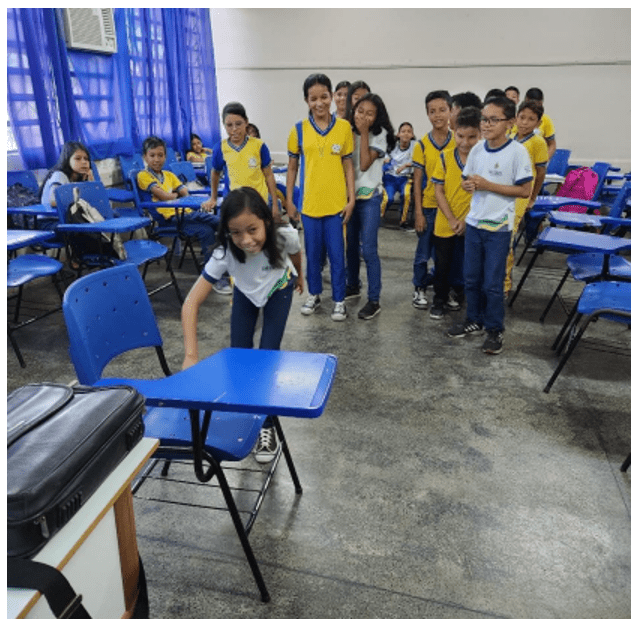
The community student who reached the bell first had to answer the question. If they answered correctly, a leaf was removed from the tree on the opposing team’s side. If they answered incorrectly, a leaf was removed from their side of the tree. The team that deforested their side of the tree first lost.
In the third stage, due to the great success of the game among the teachers who witnessed its application in their classrooms, at their request, meetings were held with teachers from various disciplines of Elementary School. The purpose was to clarify them about the criteria used in game application and train them to use this new tool in activities with their students. They expressed a keen interest in applying the theme content from various areas of knowledge to their students using this new teaching tool.
In the fourth stage, the academic extensionists, with the assistance of the coordinators of this extension activity, evaluated the results obtained from the game’s application. The purpose was to identify the most relevant contents for the community and make the necessary modifications and adaptations to the game for better didactic-pedagogical utilization for teaching the subjects. This evaluation was carried out through a discussion round with elementary school students and teachers, seeking to understand what the community (students and educators) thought of participating in this extension activity, what they found most interesting, whether they learned any new content about the topics addressed through the game, and if there were any criticisms or suggestions for improvement.
In the fifth stage, the game was adapted based on the suggestions from the community, as shown in Figure 4. Furthermore, it was prepared for permanent production.
Figure 4: Elementary school students in the 6th grade recording their feedback and suggestions for the improvement of this extension activity
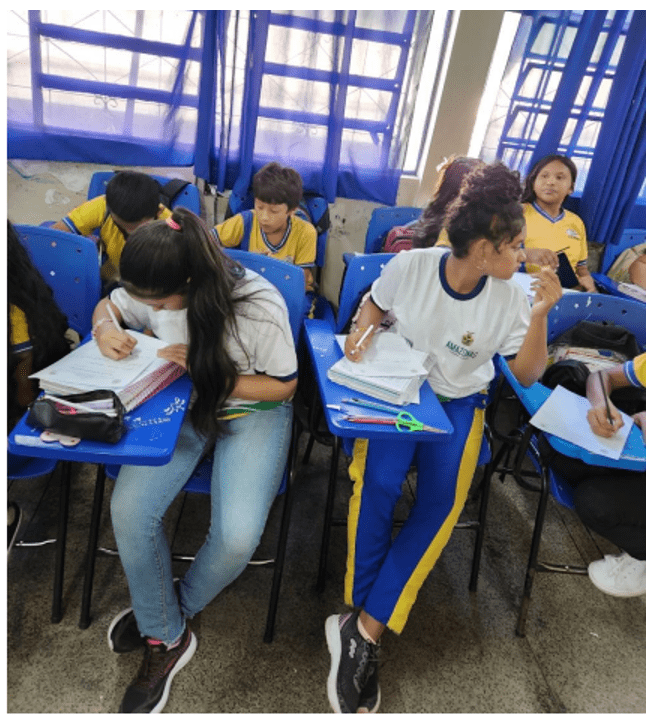
In the sixth stage, the reports of the extension academic students were collected, as can be seen in Figure 5, and the final report of this extension activity was prepared and submitted to the Pro-Rectory of Extension at the Federal University of Amazonas. In this stage, this article was also prepared.
Figure 5: Extension academic students sharing their experiences participating in this extension activity
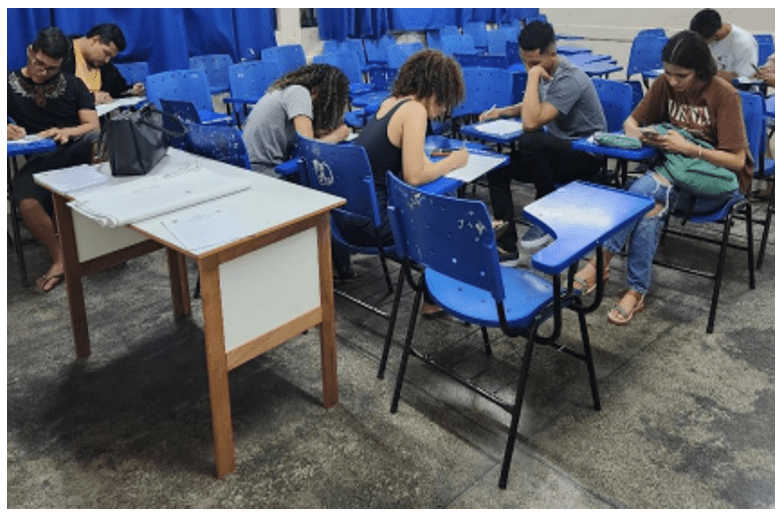
3. RESULTS
University extension actions are of utmost importance in assisting the teaching of content in primary education, especially in the field of botany, for various reasons, as explained below:
- Closer University-Community Relations: Extension actions enable the university to get closer to the primary education community (Silva, 2020), creating a bridge between academic knowledge and local needs (Fujita & Barreviera, 2014).
- Knowledge Exchange: University students can share their specialized knowledge with primary education students and teachers, enriching education with up-to-date information and innovative approaches (Henriques & Silveira, 2021).
- Educational Resources: Through extension actions, educational materials and resources can be developed, such as games, practical activities, and study guides, making learning more engaging and effective (Assunção et al., 2022).
- Teacher Training: Extension actions can include teacher training and development programs, helping them enhance their teaching practices and update their knowledge (Araújo & De Paulo, 2016).
- Teacher Training: Motivating Students: Extension activities can ignite the interest and motivation of elementary school students for learning, making the process more engaging and meaningful (Túrmina & Rodrigues, 2016).
- Teaching Contextualization: Extension activities can contextualize academic content, demonstrating how it applies to students’ daily lives and the local reality (Biscard; Pereira-Santos; Silva, 2014).
- Strengthening Basic Education: The partnership between the university and primary education enhances the educational system as a whole, promoting the quality of education and the appreciation of basic education (Pimentel, 2019).
Games can be a powerful didactic tool for teaching botany and other scientific disciplines (Costa; Miranda; Gonzaga, 2018). They have the ability to make learning more engaging, fun, and interactive for students (Costa, 2023), which can lead to a deeper and more meaningful understanding of botanical concepts. Below, some points are highlighted to demonstrate the importance of games in botany education:
- Active Learning: Games enable students to learn actively by actively participating in activities rather than being passive listeners in the classroom (Carneiro et al., 2018). They need to make decisions, solve problems, and apply botanical knowledge in practice, which can improve information retention (Gregol et al., 2021).
- Motivation and Engagement: Games are inherently motivating and can increase students’ engagement with the subject (Meirelles, 2022). By turning learning into a fun and challenging experience, students become more enthusiastic and willing to learn about botany.
- Practical Application of Concepts: Games allow students to put into practice the theoretical concepts they have learned (Azevedo; Ramos; Benetti, 2021). This helps strengthen their understanding of botanical principles and their real-world application.
- Collaboration and Teamwork: Many games are designed to be played in teams, encouraging collaboration among students (Silva Neto et al., 2013). This collaboration can stimulate discussions about botanical topics, allowing students to learn from each other.
- Simulated Experiences: Some botanical concepts can be challenging to visualize or understand through lectures and texts alone. Games can create simulated experiences that make it easier to grasp complex botanical phenomena (Tori et al., 2020).
- Development of Cognitive Skills: Games can help develop cognitive skills such as problem-solving, decision-making, logical reasoning, and critical thinking skills, all of which are essential for the study of botany (Ramos et al., 2017).
- Significant Learning: By presenting botanical concepts through practical and contextualized situations, games allow students to make meaningful connections with the content (Retondar, 2011). This can lead to deeper and long-lasting learning.
- Stress Reduction: The classroom environment can be intimidating for some students, and games offer a more relaxed and less stressful way of learning (Soares; Xavier; Soares, 2014). This can help reduce anxiety and increase students’ confidence in studying botany.
Creating games by university academic extension students can be an extremely enriching and beneficial experience for these students, both academically and personally. Here are some reasons why game creation can be important for university students involved in extension activities:
- Practical experience: By creating games, university extension students have the opportunity to apply the theoretical knowledge they have gained in their academic courses to a practical and concrete project (Digiampietri & Kropiwiec, 2008). This practical experience can help solidify their learning and understanding of the concepts covered in their areas of study.
- Skill development: Game development requires a variety of skills, such as creative thinking, problem-solving, teamwork, effective communication, and organizational skills (Bressan & Amaral, 2018). These skills are valuable not only for the game creation process but also for the professional development of university students in their future careers.
- Innovation and creativity: Game creation is an activity that allows university students to express their creativity and innovation (Franco, 2009). They have the freedom to explore new ideas, concepts, and approaches to design games that meet the specific needs of extension audiences.
- Social impact: Through game development in extension projects, university students have the opportunity to create educational and playful tools that can benefit the local community or other target populations (Pires; Fidelis; Martins, 2018) of the extension. These games can be used to disseminate information, raise awareness of relevant social issues, or assist in teaching important skills and knowledge.
- Empowerment and leadership: Engaging in the game development process can empower university extension students, allowing them to become leaders of meaningful projects. They can take on responsibilities, lead teams, and engage in decision-making activities, contributing to the development of their leadership skills (Brito; Mello; Araújo, 2011).
- Community Interaction: Creating games for extension can involve direct interaction with the community or the project’s target audience (Senna et al., 2016). This interaction provides university students with the opportunity to better understand the needs and demands of the community and to create more relevant and effective games.
- Continuous Learning: The process of game development is a journey of continuous learning (Barbosa Neto & Fonseca, 2013). Extension university students will encounter challenges and obstacles during the process, but they will also have the opportunity to learn from their experiences and improve their projects over time.
4. CONCLUSION
University extension actions are a two-way street that benefits both elementary school students and teachers and the involved university students. They promote the exchange of knowledge, enrich the teaching-learning process, and contribute to the improvement of basic education, strengthening the relationship between the university and the community.
The use of games as a teaching tool in botany can significantly enhance students’ learning experiences, making the process more interesting, engaging, and effective. Furthermore, games provide a valuable opportunity for the practical application of theoretical concepts, skill development, and creativity stimulation, all while students have fun learning about the fascinating science of plants.
Creating games for university academic extensionists goes beyond being just a recreational activity. It is an opportunity for students to apply their academic knowledge, develop important skills, innovate, and positively impact the community. By participating in this process, university students can become agents of social change and promote meaningful learning for both themselves and others.
REFERENCES
ARAÚJO, Karlane Holanda, DE PAULO, Adriano Ferreiro. O pacto nacional pelo fortalecimento do Ensino Médio: o desafio de aderir o campo temático da educação inclusiva na formação de professore. Revista Espaço Acadêmico. n. 176, 2016. Disponivel em: https://periodicos.uem.br/ojs/index.php/EspacoAcademico/article/view/28871/16017. Acesso em: 09 ago. 2023.
ASSUNÇÃO, Cássio Gustavo Pena; et al. Uso de Jogos e redes sociais como estratégias de promoção de saúde para crianças e adolescentes: um relato de experiência de extensão universitária. Revista De Extensão Do Instituto Federal Catarinense. V. 10, n. 18, p. 242 – 255, 2022.
AZEVEDO, Lucas Massensini; RAMOS, Eugênio Maria de França; BENETTI, Bernadete. Ensino de física e jogos de carta: o lúdico como recurso didático na formação de professores. Revista Enseñanza de la física. v. 33, n. 2, p. 333 – 341. 2021.
BARBOSA NETO, José Francisco; FONSECA, Fernando de Souza da. Jogos educativos em dispositivos móveis como auxílio ao ensino da matemática. Revista Novas Tecnologias na Educação, v. 11, n. 1, 10 p., 2013. Disponível em: https://seer.ufrgs.br/index.php/renote/article/view/41623. Acesso em: 12 ago. 2023.
BISCARD, Daniela Gomes dos Santos; PEREIRA-SANTOS, Marcos; SILVA, Lilian Bittencourt. Formação em saúde, extensão universitária e Sistema Único de Saúde (SUS): conexões necessárias entre conhecimento e intervenções centradas na realidade e repercussões no processo formativo. Revista Interface – Comunicação, Saúde e Educação. v. 18, n. 48, p. 177 – 186, 2014.
BRASIL. Casa Civil, Subchefia para a Assuntos Jurídicos. Constituição da República Federativa do Brasil de 1998. Disponível em: https://www.planalto.gov.br/ccivil_03/constituicao/constituicao.htm. Acesso em: 14 ago. 2023.
BRESSAN, Manoelle Lopes Quinta; AMARAL, Marília Abrahão. Avaliando a contribuição da Scratich para a aprendizagem pela solução de problemas e o desenvolvimento do pensamento criativo. Revista Intersaberes. v. 10, n. 21, p. 509 – 526, 2018.
BRITO, Luana Patrícia Silvia de; MELLO, Rachel Costa de Azevedo; ARAÚJO, Mônica Lopes Folena. O uso de jogos lúdicos no ensino de ciências e biologia como estratégia facilitadora no processo de aprendizagem: um estudo de caso. In: XI Jornada de Ensino, Pesquisa e Extensão – JEPEX, UFPRE: Recife. 3 p., 2011. Disponível em: http://www.eventosufrpe.com.br/2011/cd/resumos/R0600-1.pdf. Acesso em: 12 ago. 2023.
CARNEIRO, Caroline Carlos Melo; et al. Elaboração de jogos educativos para o ensino da célula eucarionte: relato de uma extensão universitária. Revista Eletrônica de Ciências da Educação, v. 17, n. 2, 17 p., 2018. Disponível em: 1984-9577-1-PB.pdf. Acesso em: 10 ago. 2023.
COSTA, Ana Mikaele Marques; MOTA, Ana Paula Araújo; BRITO, Suelma Freitas de. Publicações sobre o ensino de botânica: o que os estudos de 2017 a 2020 mostraram? Arquivos do Mundi, v. 25, n. 2, p. 111 – 126, 2021.
COSTA, Rosa Cristina; MIRANDA, Jean Carlos; GONZAGA, Gláucia Ribeiro. Avaliação e validação do jogo didático “desafio ciência – sistemas do corpo humano” como ferramenta para o ensino de ciências. RENCIMA. v. 9, n. 5, p. 56 – 75, 2018. Disponível em: https://app.uff.br/riuff/bitstream/handle/1/15439/Avalia%C3%A7%C3%A3o%20e%20valida%C3%A7%C3%A3o%20do%20jogo%20did%C3%A1tico%20Desafio%20Ci%C3%AAncias%20-%20Sistemas%20do%20Corpo%20Humano%20como%20ferramenta%20para%20o%20ensino%20de%20Ci%C3%AAncias.pdf?sequence=1. Acesso em: 09 ago. 2023.
COSTA, Sealtiel Morais. Capítulo 6: Jogos virtuais no processo de ensino. In. SILVA, Dion Leno Benchimol da; et al. (ORGs). Tecnologia, Educação e Docência: uso das tecnologias para um ensino inovador. 1ª Edição. Belém: RFB, 152 p., 2023.
CRUZ, Breno de Paula Andrade; et al. Extensão universitária e responsabilidade social: 20 anos de experiência de uma instituição de ensino superior. Revista de Gestão Social e Ambiental, v. 5, n. 3, p. 3 – 16, 2011. Disponível em: pdf_34-libre.pdf (d1wqtxts1xzle7.cloudfront.net). Acesso em: 14 ago. 2023.
DIGIAMPIETRI, Luciano A.; KROPIWIEC, Diogo D. Desenvolvimento de jogos para o aperfeiçoamento na aprendizagem de disciplinas de ciências da computação. In: VII Simpósio in computer games and digital entertainiment p. 49 – 52, 2008. Disponível em: https://sbgames.org/papers/sbgames08/Proceedings-SBGames-Posters-2008-Final-CD.pdf#page=60. Acesso em: 12 ago. 2023.
FRANCO, Maria Amélia Santoro. Prática docente universitária e a construção coletiva de conhecimentos: possibilidades de transformações no processo ensino-aprendizagem. Santos: Pró-Reitoria de Graduação da Universidade Católica de Santos. 74 p, 2009.
FUJITA, Mariângela Spotti Lopes; BARRAVIERA, Benedito. Revista Ciência em Extensão: 10 anos disseminando conhecimento e transformando a relação entre a universidade e a sociedade. Revista Ciência Em Extensão, v. 10, n. 3, p. 2 – 4, 2014.
GREGOL, Rafaela; et al. Desenvolvimento e aplicação da atividade de educação ambiental: lagartixa das dunas (Liolaemos arambarensis) em foco. Educação Ambiental Brasil, v. 2, n. 3, p. 02 – 24, 2021. Retirado de: https://www.educacaoambientalbrasil.com.br/index.php/EABRA/article/view/48/53. Acesso em: 10 ago. 2023.
HENRIQUES, Gerusa Conceição; SILVEIRA, Adriana Bina da. Projeto compartilhando conhecimentos sobre cidadania: um estudo da visão educacional e da extensão na perspectiva do núcleo de prática jurídica do Centro Universitário de Brusque – UNIFEBE. Revista UNIFEBE, n. 25, 2021. Disponível em: https://www.educacaoambientalbrasil.com.br/index.php/EABRA/article/view/48/53788-Texto%20do%20Artigo-2466-1-10-20221118.pdf. Acesso em: 09 ago. 2023.
LAMARCA, Daniel Sá Freire; et al. Capítulo 1. A relevância do uso das tecnologias de informação e comunicação (TIC) nos projetos de extensão sediados na UNESP campus de Tupã. In: Tópicos de Administração. v. 2. 1ª Edição. Belo Horizonte: Editora Poisson. 276 p. 2018. Disponível em: https://www.researchgate.net/profile/Lisandro-Bonome/publication/325177112_Educacao_Ambiental_praticas_extensionistas_em_escolas_do_municipio_de_Rio_Bonito_do_Iguacu_-_PR/links/5afc40680f7e9b3b0bf38ba6/Educacao-Ambiental-praticas-extensionistas-em-escolas-do-municipio-de-Rio-Bonito-do-Iguacu-PR.pdf#page=7. Acesso em: 14 ago.2023.
LEITE, Laura Celotto Canto; CANTO, Eduardo Leite do. Ciências Naturais, aprendendo com o cotidiano. 6ª Edição. São Paulo: Moderna, 2018, 248 p.
LOTTERMANN, Ana Laura Fisher; et al. Formação de professores de educação física para o trabalho junto de alunos com deficiência: contribuições do ensino, pesquisa e extensão. Cadernos de Educação Física e Esportes, v. 17, n. 1, p. 245 – 253, 2019.
MALOSSO, Milena Gaion; ALVES, Akyla Anara Frota Lima; SANTOS, Ivan Monteiro dos. Feirinha de plantas medicinais: extensão universitária para utilização adequada de fitomedicamentos caseiros. Revista Científica Multidisciplinar Núcleo do Conhecimento, v. 5, p. 28 – 41, 2023. Disponível em: https://www.nucleodoconhecimento.com.br/biologia/fitomedicamentos. Acesso em: 14 ago. 2023.
MEIRELLES, Thiago de Oliveira Melo. Revisão sistemática sobre características e eficácia de jogos sérios para pessoas com autismo. (2022). Dissertação (mestrado em psicologia) – Instituto Federal de Uberlândia. Uberlândia, 2022, 78 p. Disponível em: https://repositorio.ufu.br/bitstream/123456789/36462/4/RevisaoSistematicaSobre.pdf. Acesso em: 10 ago. 2023.
MELLO, Paula Maria Abrantes Cotta de. A citação da bibliografia no contexto da comunicação: um estudo exploratório na área de Botânica. Ciência da Informação, v. 25, n. 3, 1996. Disponível em: https://revista.ibict.br/ciinf/article/view/638/642. Acesso em: 26 jul. 2023.
MONERAT, Carlos Alberto Andrade; ROCHA, Marcelo Borges. Como a Biologia Celular tem sido abordada por revistas de divulgação científica. Contexto & Educação, ano 33, n. 105 maio – agosto, 27 a 51 p., 2018. Disponível em: 7280-Texto do artigo-35452-1-10-20180626.pdf. Acesso em: 26 jul. 2023.
PAIVA, Maria Mabelle Pereira Costa; FONSECA, Aluísio Marques da; COLARES, Regilane Paulo. Estratégias didáticas potencializadoras no ensino e aprendizagem de química. Revista de Estudos em Educação e Diversidade, v. 3, n. 7, p. 01 – 25, 2022.
PEREIRA-RIBEIRO, Juliane; et al. O ensino de botânica além da sala da e aula: um estudo de caso sobre a utilização das aulas de campo para o aperfeiçoamento do ensino-aprendizagem. Revista Científica da FAESA, v. 14, n. 1, p. 18 – 28, 2018.
PERINI, Monique; ROSSINI, Josiene. Aplicação de modelos didáticos no ensino de biologia floral. Inter Science Place – Internacional Scientific Journal. v. 13, n. 3. P. 58 – 157, 2018. Disponível em: https://www.researchgate.net/profile/Josiene-Rossini/publication/343485770_APLICACAO_DE_MODELOS_DIDATICOS_NO_ENSINO_DE_BIOLOGIA_FLORAL_APPLICATION_OF_EDUCATIONAL_MODELS_IN_BIOLOGY_TEACHING_FLORAL/links/5f2c795e299bf13404ab3c8d/APLICACAO-DE-MODELOS-DIDATICOS-NO-ENSINO-DE-BIOLOGIA-FLORAL-APPLICATION-OF-EDUCATIONAL-MODELS-IN-BIOLOGY-TEACHING-FLORAL.pdf. Acesso em: 26 jul. 2023.
PIMENTEL, Gabriela Souza Rêgo. O Brasil e os desafios da educação e dos educadores na agenda 2030 da ONU. Nova Paideia Revista Interdisciplinar em Educação e Pesquisa. v. 1, n. 3, p. 22 – 33, 2019. Disponível em: https://ojs.novapaideia.org/index.php/RIEP/article/view/35. Acesso em: 09 ago. 2023.
PIRES, Eliane Santos Silva Machado; FIDELIS, Gildene de Carvalho; MARTINS, Ranniery Fernandes Militão. Brincando também se aprende: o lúdico como ferramenta pedagógica. Cadernos Camilliani, v. 15, n. 1, p. 41 – 56, 2018. Disponível em: https://www.saocamilo-es.br/revista/index.php/cadernoscamilliani/article/view/172/97. Acesso em: 12 ago. 2023.
RAMOS, Daniela Karini; et al. O uso de jogos cognitivos no contexto escolar: contribuições às funções executivas. Psicologia Escolar e Educacional, v. 21, n. 2, p. 265 – 275, 2017.
RETONDAR, Jeferson. O jogo como conteúdo de ensino na perspectiva dos estudos do imaginário social. Revista Brasileira de Ciências e Esportes, v. 33, n. 2, p. 413 – 423, 2011.
RIBEIRO, Job Antônio Garcia; AMORIM, Laisa Pereira. Os jogos didáticos na educação ambiental: uma revisão de literatura em periódicos e eventos nacionais. v.17, n. 4, p. 389 – 400, 2022. Disponível em: https://periodicos.unifesp.br/index.php/revbea/article/view/12626/9860. Acesso em: 26 set. 2023.
SILVA, Paula Rayane Mendonça. A prática e a formação docente no Ensino de Biologia. (2019). Dissertação (Mestrado em Ciências das Humanidades) – Instituto de Educação, Agricultura e Ambiente – Universidade Federal do Amazonas. Humaitá-AM, 2019, 103 p.
SILVA, Wagner Pires da. Extensão Universitária: um conceito em construção. Revista Extensão & Sociedade, Edição 2020.2. p. 21 a 32. 2020.
SILVA NETO, Sebastião Rogério; et al. Jogos educacionais como ferramenta de auxílio em sala se aula. In: II Congresso Brasileiro de Informática em Educação – CBIE. P. 130 a 139, 2013.
SCHETTINO, Mara Elizabeth Gomes Pereira de Oliveira; MENDES, Ana Nery Furlan. O uso de power point como ferramenta para o desenvolvimento de jogos visando contribuir com o ensino de eletroquímica na educação básica. Brazilian Journal of Development, v. 7, n.4, p. 39460 – 39481, 2021. Disponível em: admin,+BJD+418.pdf. Acesso em: 26 set. 2023.
SENNA, Samara de; et al. Aprendizagem baseada em jogos digitais: a contribuição de jogos epistêmicos na geração de novos conhecimentos. Revista Novas Tecnologias Na Educação, v. 14, n. 1, 11 p., 2016. Disponível em: https://seer.ufrgs.br/index.php/renote/article/view/67323/38417. Acesso em: 12 ago. 2023.
SOARES, Fernanda; XAVIER, Guilherme Augusto; SOARES, Samantha. PILAGI: um jogo corporativo em tabuleiro. (2014). Trabalho de Conclusão de Curso (tecnólogo em
Design Gráfico) – Faculdade de Tecnologia do SENEC de Goiás. Goiânia, 2014, 106 p. Disponível em: http://repositorio.go.senac.br:8080/jspui/bitstream/123456789/101/1/TCC%20Fernanda%2c%20Guilherme%2c%20Samantha.pdf. Acesso em: 18 out. 2023.
TORI, Romero; et al. Capítulo 19: Educação. In: TORI, Romero; HOUNSELL, Marcelo da Silva (Org.). Introdução à realidade virtual e aumentada. 3ª Edição. Porto Alegre: SBC. 469 p. 2020. Disponível em: https://sol.sbc.org.br/livros/index.php/sbc/catalog/download/66/291/540-1?inline=1#page=399. Acesso em: 10 ago. 2023.
TÚRMINA, Sandra Ghedin; RODRIGUES, Maurício Ghedin. Análise da efetividade da paródia enquanto estratégia didática no processo ensino-aprendizagem de biologia a partir da percepção discente. 24p. In: Os desafios da escola pública paranaense na perspectiva do professor PDE – Artigos. Caderno PDE, v. 1, 2016. Disponível em: http://www.diaadiaeducacao.pr.gov.br/portals/cadernospde/pdebusca/producoes_pde/2016/2016_artigo_bio_unioeste_sandraghedinturmina.pdf. Acesso em: 09 ago. 2023.
UFAM/PROEXTI, Universidade Federal do Amazonas, Pró-Reitoria de Extensão. Elaboração de Propostas de Ações de Extensão: Apostila Básica. 36p., 2016. Disponível em: Manual-Sigproj-02-01-17.pdf (ufam.edu.br). Acesso em: 14 ago. 2023.
[1] Advisor. Ph.D. ORCID: https://orcid.org/0000-0003-1613-1331. Currículo Lattes: https://lattes.cnpq.br/1873078781409836.
[2] Undergraduate. ORCID: https://orcid.org/0009.0001.6082.7486. Currículo Lattes: http://lattes.cnpq.br/4786365437031289.
[3] Master’s. ORCID: https://orcid.org/0000.0002-5025-7782. Currículo Lattes: http://lattes.cnpq.br/7975480803560354.
Submitted: September 19, 2023.
Approved: October 6, 2023.

